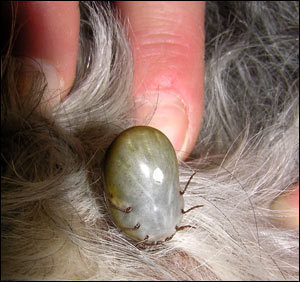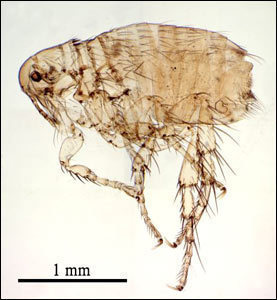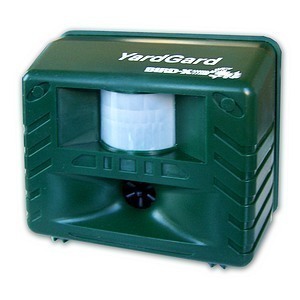How Big is a Dog Tick?
There are two known ticks that infest dogs: the American  Dog Tick and the Brown Dog Tick. Both ticks do not carry Lyme disease but they can however, still cause a number of health maladies if they remain untreated.
Dog Tick and the Brown Dog Tick. Both ticks do not carry Lyme disease but they can however, still cause a number of health maladies if they remain untreated.
American Dog Tick
The American Dog Tick, otherwise known as a wood tick has a scientific name of Dermacentor variabilis. This tick carries bacteria that have been known to cause a few maladies on humans including the Rocky Mountain spotted fever, which can be fatal. This fever is also known as tick typhus.
Brown Dog Tick
The Brown Dog Tick on the other hand, rarely bites humans. This mainly feeds on dogs and can survive and go through its life cycle stages indoors which means that they can thrive inside your homes as well as in kennels.
Hence, this type of tick is more commonly known as kennel tick. Its scientific name is Rhipicephalus sanguineus.
How Big is a Dog Tick?
American Dog Tick
The American Dog Tick is about 1/36-inch in length and has some sort of reddish-brown hue. Its larvae and nymphs primarily get their sustenance from rodents and fowl while the adult feeds on dogs and other mammals. They also feed on humans, hence; this is the more dangerous type of dog tick.
The females have the same color as the males but they can be distinguished by a silver dot behind their heads. Once they have fed on their host, their size increases by at least half an inch in length.
The males on the other hand can be distinguished by their silver line on their backsides.
In some areas in the United States, mature American Dog Ticks primarily thrive during the months of April until June.
Brown Dog Tick
The Brown Dog Tick is about 1/8-inch in length and like the American Dog Tick, the females of this variety likewise increase their size by at least half an inch after feeding.
But unlike American Dog Ticks where the larvae and nymphs feed on rodents and fowl; the Brown Dog Tick feeds on its host, which is your dog, during all phases of its life cycle; from larva to nymph to adult.
You will most likely find these ticks hidden behind your dog’s ears or between its toes. This tick can produce up to three thousand eggs cycle! Although it does not carry any disease that can inflict humans, your dogs however can suffer greatly from their infestation.
To get rid of both these fleas and to prevent them from ever attaching to your dogs, you can use flea control products. You should also make it a habit to regularly bathe your dog, keep your surroundings clean and do spot checks on your dog every so often.





